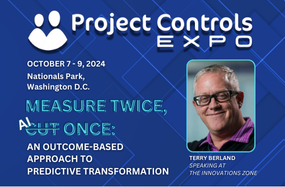
What Is Business Analytics?

Business analytics is defined as technologies and disciplines used to solve business problems through statistical models, data analysis, and other methods.
The difference between business analytics and data analytics is that business analytics seeks to solve higher-level organizational challenges or goals. In contrast, data analytics is concerned with analyzing data—independent from higher-level business or corporate strategy.
The Four Types of Business Analytics
As recently mentioned, there are four stages of business analytics: descriptive, diagnostic, predictive, and prescriptive. While each step serves a specific purpose, they’re also interconnected.
Let’s dive into each stage to examine how business analytics may be helpful to you and your organization.
Descriptive Analytics
Descriptive business analytics (also known as business intelligence) mines and aggregates current and historical data to identify patterns, trends, and relationships. Examples include site traffic, resource engagement reports, financial statement analysis, demand trends, aggregated survey results, and progress to goals.
On a basic level, descriptive analytics illuminates your business’s strengths and weaknesses. Based on preliminary insights, you can develop strategies to improve your business. After completing this stage, you should have a general understanding of all currently available statistics.
Diagnostic Analytics
If descriptive analytics describes the what, diagnostic analytics describes the why. According to Gartner, diagnostic analytics is “A form of advanced analytics that examines data or content to answer the question, ‘Why did it happen?’ It is characterized by techniques such as drill-down, data discovery, data mining, and correlations.”
In the second stage of business analytics, various methods may be used to determine the causes of trends and correlations between variables. Harvard Business School describes these concepts as hypothesis testing, correlation versus causation, and diagnostic regression analysis. The first example of diagnostic analytics, hypothesis testing, uses statistical means to test a hypothetical statement.
One crucial distinction is the difference between correlation and causation: just because two variables are correlated doesn’t mean they’re causally related. For example, you may decide to explore the difference via A/B testing or surveys. An in-depth analysis, such as regression analysis, is used to understand the relationship between two or more variables using a mathematical equation.
Predictive Analytics
Once you’ve used descriptive and diagnostic analytics techniques to understand variable relationships in a historical context, you may be ready to develop forecasts—which exemplify predictive analytics. A form of advanced analytics that builds upon the first two, predictive analytics uses historical and current data to forecast behavior, activity, and trends via statistical analysis techniques.
Businesses can likewise utilize data queries or machine learning algorithms to create predictive models that predict the likelihood of an event or action happening again. Tech Target names five steps in the predictive analytics process: define the requirements, explore the data, develop the model, deploy the model, and validate the results.
Though that may sound simple, getting to a business analytics-based process that works for gleaning reliable or valuable insights can be more challenging than it may appear at first. Therefore, it helps to work with experienced business analysts who know how to define data requirements or identify data worth exploring carefully.
Prescriptive Analytics
Prescriptive analytics is the fourth and final stage of business analytics. As is built into the definition, it prescribes a course of action that a business should take based on previously collected data and formerly observed patterns.
This kind of data-driven decision-making may take many different forms. Understanding how prescriptive analytics may materialize can be challenging. Luckily, Harvard Business School considers examples of prescriptive analytics that include venture capital investment decisions, sales lead scoring, content curation via algorithmic recommendations, and email marketing automation.
Moreover, there are different ways to conduct prescriptive analytics, including manual analysis and third-party analytics tools. The method utilized may depend on the data being analyzed.
How Business Analytics Works
Business analytics looks different for each organization. Before any analysis can occur, a few fundamental processes serve as building blocks. First, business goals must be determined. Second, your organization must decide on an analysis methodology. Third, you need your data to support the analysis; this is frequently accomplished with the help of more than one system or source. And finally, data must be cleaned and integrated into a single, central location.
But first, let’s examine the nitty-gritty details: business analytics begins with data collection: however, not just any data is collected. Parameters must first be set, so each data set is collected and collated according to specific guidelines, ensuring that each data set meets a particular need or answers a specific question. Furthermore, customized analytics software and tools are utilized to process each dataset, with reports prepared to present the data in an insightful, illuminating way.
If you think this process sounds like the scientific method, you wouldn’t be wrong: maybe this is part of why a field called ‘data science’ is applied to analytics. A hypothesis is written just as a goal or data field is set. Then business analysts collect data to analyze, just as scientific papers or lab reports compile data or observations. The process of iteration in science—or repetition of an experiment to see if experimental results can be duplicated—also resembles what business analysts perform via iteration: a cyclical, repetitive process of data collection and filtering to produce cleaner, more fine-tuned results.
This process is more manageable when housed in a business intelligence cloud since integration and updates can happen in near-real-time. We at LoadSpring utilize business analytics via cloud business intelligence solutions to analyze your data and manage all your projects from one platform.
Adopting Business Analytics in Your Organization
LoadSpring believes in iteration so much that we incorporated it right into LoadSpring Cloud Platform and ProjectINTEL. After a cloud readiness assessment, LoadSpring uses a comprehensive, three-phase process with three repeated, cyclical steps within each phase: Extract-Clean-Build. Each phase lasts three months.
LoadSpring’s business analytics tools provide easy ways to adopt business analytics and inspire your stakeholders. LoadSpring Cloud Platform provides two possible paths toward broader business insights in real-time: choose between ready-to-play KPI tool sets or custom data development.
Continuing the process, LoadSpring partners with companies utilizing visualization tools for actionable analytics: these can help determine outcomes, improving your ROI. And all the above is housed within LoadSpring Cloud Platform, our solution to the ongoing call for digital transformation in a changing world.
Contact us today to learn how to adopt unique business analytics solutions for your organization.








